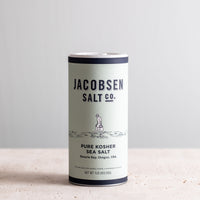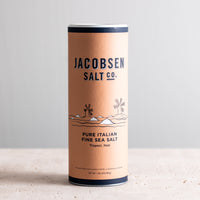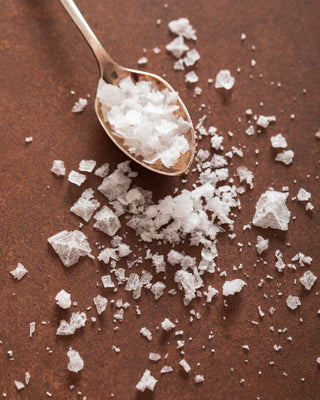

Reimagining Leftovers & Cabbage Pasta with Tamar Adler
Posted by:
Jacobsen Salt Co.
Posted on:
Mar 01, 2023
Shop The Recipe

Pure Kosher Sea Salt
$13

Pure Fine Sea Salt
$10
Don't dismiss those slightly-limp scallions or celery stalks just yet– herein lies the inspiration we all may need when it comes to every leftover possible.
Our spring reading and kitchen companion this season is Tamar Adler’s newest cookbook, The Everlasting Meal Cookbook: Leftovers A-Z . The James Beard and IACP award-winning author has created a comprehensive and practical resource for reimagining any leftover you could think of, filled with original illustrations from Caitlin Winner.
"If you’ve never felt tenderly toward leftovers, it may still be of interest that thousands of culinary delicacies rely on using what seems useless," says Tamar. "This includes ribollita, and French onion soup, bouillabaisse and minestrone, arancini, rice pudding, fried rice, cider vinegar, and dumplings and bone broth and, and, and."
To celebrate its launch, we’re sharing one of Tamar’s recipes and insights on a type of produce many of us have overlooked in the crisper drawer: Cabbage.
Recipe and Words by: Tamar Adler
I have only one really useful thing to say about cabbage: You may find yourself with forgotten or neglected or graying cabbage—which you could call “dubious cabbage,” except that it is you who are dubious, not the cabbage.
But cabbage that has actually gone bad is a rarer breed than the passenger pigeon. Cabbage is one of the longest lasting vegetables humans grow. Protected from oxygen in a cool environment, it will stay good for months. I don’t use “good” figuratively. I mean that the cabbage will taste good—as long as it’s trimmed attentively and seasoned and cooked well. If cabbage starts to gray at its root, or along its cut edge, remove what has grayed with a sharp knife. Do the same with the outer leaves that have grayed or wilted conspicuously, along with anything else about which you are dubious.
Eventually, you’ll get to a clean crisp part. That is where your cabbage for today begins. There are no recipes in this book for “cabbage, old,” or “cabbage, wilted,” but just for “cabbage” since cabbage is what you have.
Process
Heat a pan large enough to hold the pasta. Add the olive oil, garlic, anchovies, chili flakes, and a tiny pinch of salt. Cook over medium-low heat, stirring, until the garlic has begun to soften and the anchovies have broken down, 1–2 minutes. Add the cabbage, mix through, then remove from the heat.
In a large pot of boiling water salted to taste like pleasant seawater, cook the pasta. Reserve ½ cup pasta water just before draining.
Add the pasta and pasta water to the pan and return to medium-low heat, stirring, until combined and glossy. Taste for doneness and salt and continue cooking until done. Add a squeeze of lemon, then the cheese, and mix well. Top with the parsley and bread crumbs and eat.













